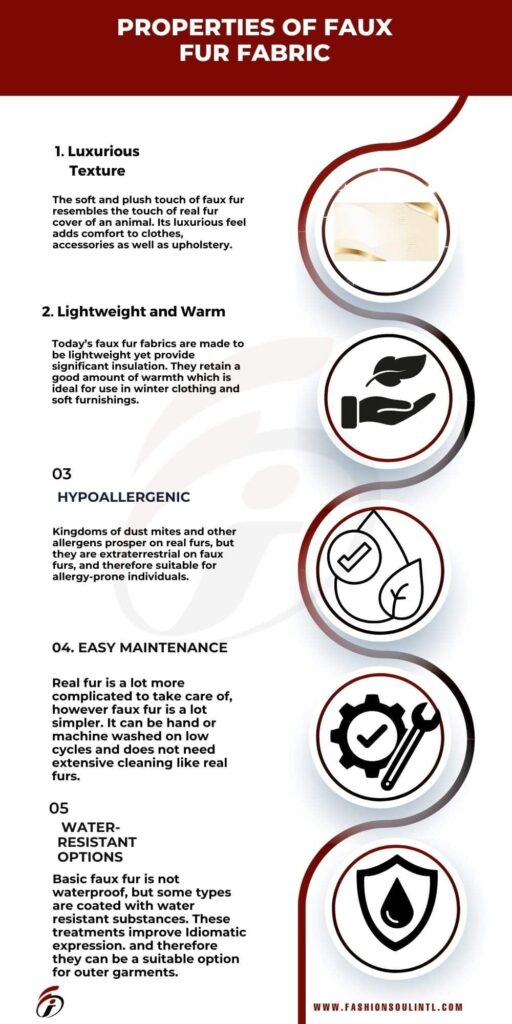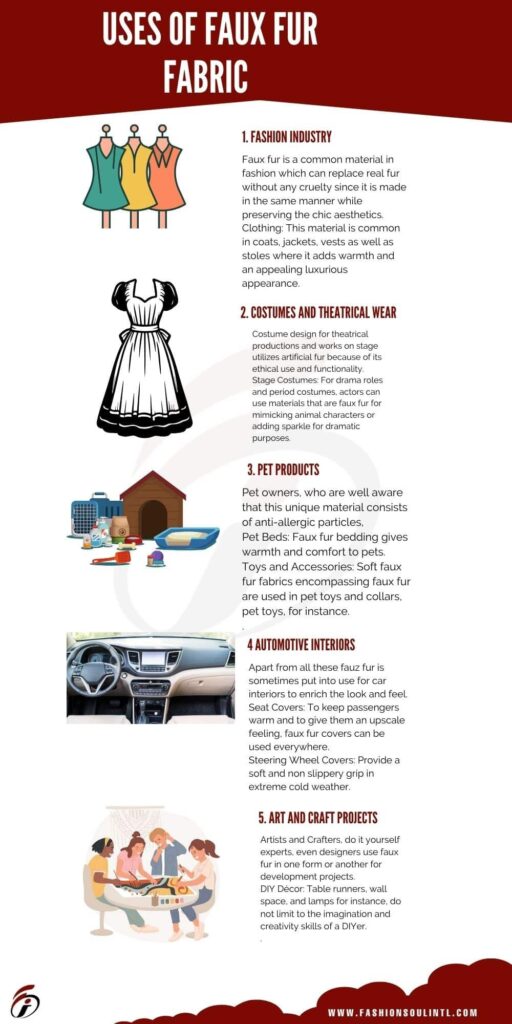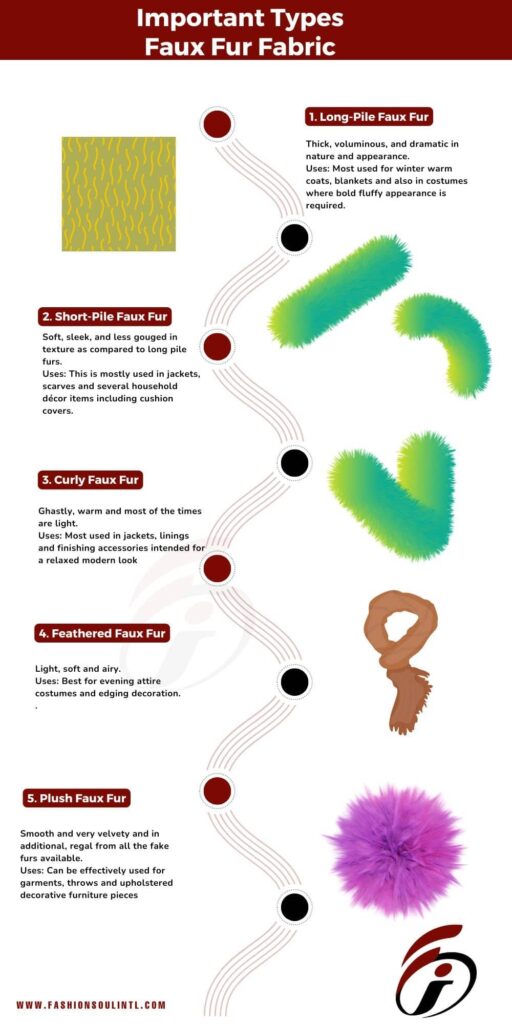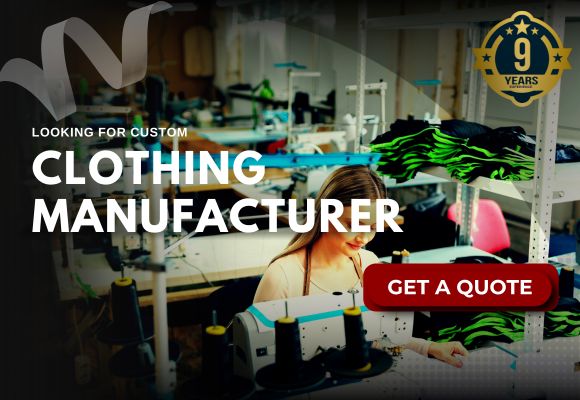Faux fur fabric is preferred today over animal fur, and for good reasons – it is ethical, sustainable, and is significantly more affordable than fur. It has a rich look and feel, an unusual and interesting process of creation, and countless fields of application. In this article, we discuss the characteristics, applications, and manufacturing process of faux fur fabric and encourage you to read more about it.
Table of contents
What is Faux Fur Fabric?
Faux fur fabric mimics the appearance and texture of real animal fur without using animal products. Manufacturers craft it primarily from materials like acrylic, polyester, and modacrylic fibers, weaving them together to create a soft, fluffy pile. Unlike real fur, it offers a cruelty-free and more sustainable option, allowing people to enjoy the aesthetics of fur while prioritizing ethical and environmental values.
Properties of Faux Fur Fabric:
Faux fur fabric enjoys great popularity and recognition for its stylish application and ethical usage. It would be more correct to say that there are other properties that have a great level of adoption around fashion, household and other industries. Let’s observe some of its important characteristics in detail:
1. Luxurious Texture
The soft and plush touch of faux fur resembles the touch of real fur cover of an animal. Its luxurious feel adds comfort to clothes, accessories as well as upholstery.
2. Durability
Faux fur, made with synthetic fibers like acrylic and polyester, is tough and durable. Unlike real fur, it has a more structured design and sheds less, making it a practical choice.
3. Lightweight and Warm
Today’s faux fur fabrics are made to be lightweight yet provide significant insulation. They retain a good amount of warmth which is ideal for use in winter clothing and soft furnishings.
4. Hypoallergenic
Kingdoms of dust mites and other allergens prosper on real furs, but they are extraterrestrial on faux furs, and therefore suitable for allergy-prone individuals.
5. Easy Maintenance
Real fur is a lot more complicated to take care of, however faux fur is a lot simpler. It can be hand or machine washed on low cycles and does not need extensive cleaning like real furs.
6. Versatility in Design
Within this fabric family, there is an impressively large number of colors, textures and patterns. Faux Fur can easily imitate the fur of different animals or create completely original patterns due to modern dyeing and printing technology.
7. Eco-Friendly Innovations
In the interest of staying sustainable, the production of faux furs has incorporated recycled fibers and bio-based substitutes. Such eco-friendly technologies lower the environmental pressure off the fabric.
8. Water-Resistant Options
Basic faux fur is not naturally waterproof, but manufacturers coat some types with water-resistant substances. These treatments enhance their ability to repel water, making them a suitable option for outer garments.
9. Cruelty-Free Alternative
Its ethical production could probably be seen as its most distinguishing feature. Faux fur minimizes the urge to raise animals for farming purposes elements — a cruelty free way to achieve fur-like appearance.
10. Resilience to Weather Conditions
Faux fur withstands any type of environmental elements.It resists shrinking, warping, and degrading under humidity or sunlight, as long as you care for it properly.

How is Faux Fur Fabric Manufacture?
The making of synthetic fur fabric is the most interesting combination of textile engineering and artistry. Intended to imitate the structure, look, and insulative capacities of actual animal fur; faux fur manufactures focus on cruelty and sustainable production lace. In this instance, consider the following as a detailed overview of the procedure in its various stages:
1. Selecting Synthetic Fibers
The process of making faux fur begins with selecting synthetic fibers, primarily acrylic and modacrylic, with occasional use of polyester. These fibers effectively emulate the softness, shine, and strength of real animal fur. Acrylic fibers create the fluffy texture that forms the basic structure, while color-fast modacrylic fibers add patterned effects and incorporate flame resistance, enhancing both aesthetics and functionality.
2. Creating the Base Fabric
The substrate fabric forms the foundation beneath the fur, offering a stable base for the pile. To ensure durability and preserve the pile’s stability, manufacturers commonly choose polyester, which is either woven or knitted. Additionally, they craft this fabric to be lightweight, tough, and resistant to abrasion. Consequently, these features enhance the overall functionality of faux fur.
3. Forming the Pile
The term “the pile” refers to the top layer of the fabric, consisting of a large amount of soft material that creates the appearance of fur. Manufacturers integrate the fiber units or tufts into the foundation by pulling a needle with a tuft of fiber at the end through the base. They snip some of these loops to create a flat surface, while leaving others intact to produce a curly appearance.
4. Dyeing the Fibers
Designers use the most advanced techniques to dye fabrics with intricate patterns and cultural motifs. They apply natural or chemical dyes to create solid colors in either neutral or vibrant hues. They create printed patterns, such as animal-inspired designs like leopards and zebras or custom motifs for specific fabric types, using extreme heat or computer-assisted technology.
5. Texturing and Finishing
Manufacturers soften fibers and add luster to cotton or silk using various techniques. They brush fabrics to make fibers thicker and fluffier. Then, they shear them for uniform lengths, creating velvet-like textures. Finally, they heat-set fibers to lock in shape, texture, and durability, ensuring the desired look and feel lasts.
6. Quality Control
Manufacturers perform advanced quality tests on different pieces of faux fur to ensure uniformity, sufficient strength to withstand pressure, and compliance with all safety regulations for fabric. Without this stage, the product may contain an unacceptable proportion of defects, such as incorrect texture or color changes.
7. Optional Eco-Friendly Enhancements
In recent years, people have placed more emphasis on reducing pollution and conserving the environment to combat global warming. As a result, they demand that manufacturers adopt ecological production methods. **Recycled fibers**, such as those made from used plastic bottles and other materials already in circulation, are crucial for synthesizing fabrics. **Bio-based materials**, derived from plants, replace petroleum-based structures in the production of these fibers.

Uses of Faux Fur Fabric:
Applications of Faux Fur Fabric: Faux Fur Fabric: Applications- Duplication of Bonded Sheep Fur With Tanned Suede Features Bundles Testing Bat
Faux fur fabric is popular because it is flexible, looks good and provides an ethical advantage. The fabric’s special features allow for broad utilization across industries. Some of the most common ways that faux fur fabric may be used are as follows:
1. Fashion Industry
Faux fur replaces real fur cruelty-free, offering the same chic aesthetics.
Clothing: Designers use faux fur in coats, jackets, vests, and stoles to add warmth and a luxurious touch.
Accessories: They incorporate faux fur into scarves, hats, gloves, and bags to make them stylish and cozy.
Footwear: Faux fur lines boots and slippers, enhancing both comfort and style.
2. Costumes and Theatrical Wear
Costume designers use faux fur in theater for its ethical and functional benefits.
Stage Costumes: Actors wear faux fur to mimic animals or add dramatic flair in roles and period pieces.
Film Industry: Movie makers use faux fur for animal characters or modern themes, meeting ethical standards.
Cosplay: Faux fur shapes imaginative costumes, like animal ears, tails, or full outfits, making it a favorite at conventions.
3. Pet Products
owners choose faux fur for its anti-allergic properties, durability, and softness.
Pets Beds: Faux fur adds warmth and comfort to pet bedding.
Toys and Accessories: Designers use soft faux fur in pet toys, collars, and other accessories for a cozy feel.
4 Automotive Interiors
Faux fur enriches car interiors with style and comfort.
Seat Covers: Designers use faux fur to keep passengers warm and add a luxury feel.
Steering Wheel Covers: Faux fur provides a soft, non-slip grip in cold weather.
5. Art and Craft Projects
Artists, crafters, and DIY experts use faux fur in various development projects.
DIY Décor: DIYers create table runners, wall art, and lamp covers with faux fur, showcasing their creativity.
Handmade Toys: Designers use its softness to craft plushies and stuffed toys.

Types of Faux Fur Fabric
Faux fur imitates real fur or creates a unique artistic look. Manufacturers produce it in large amounts for fashion, decoration, and theater. People commonly use faux fur in clothing, accessories, and costumes.
1. Long-Pile Faux Fur
This type of faux fur features long, shaggy fibers that look like fox or wolf fur. It is thick, voluminous, and dramatic in style. People often use it for warm winter coats, blankets, and costumes that need a bold, fluffy appearance.
2. Short-Pile Faux Fur
This fabric features a smooth, densely arranged fur texture, closely resembling real mink or seal fur. It feels soft and sleek, with a more refined texture compared to long pile furs. Designers commonly use it in jackets, scarves, and various household décor items, including cushion covers.
3. Curly Faux Fur
This type of fur was developed to imitate the appearance of lamb or shearling, so its fibers are compact with loops. It feels cozy, warm, and is often light in weight. Designers frequently use it in jackets, linings, and finishing accessories to create a relaxed, modern look.
4. Feathered Faux Fur
This type contains fine hairlike strands or fibers that introduce a more wisplike look.
Characteristics: Light, soft and airy.
Uses: Best for evening attire costumes and edging decoration.
5. Plush Faux Fur
Plush faux fur is a soft to dense covering which, at its best, imitates a chinchilla or rabbit fur.
Characteristics: Smooth and very velvety and in additional, regal from all the fake furs available.
Uses: Can be effectively used for garments, throws and upholstered decorative furniture pieces
6. Printed Faux Fur
Characteristics: There are bold, striking designs in the material and it can be patterned or plain.
Uses: They are mostly used in belts and necklaces, accent garments and parts, and some interior abutments
7. Sheared Faux Fur
his type is produced by shearing the top pile of faux fur material to a consistent short height to expose a flat appearing surface.
Characteristics: Very Basic, Soft and comfortable, and easy to care for.
Uses: this is seen made into collars, linings, and for mid-century modern interior decor.
8. Recycled Faux Fur
The ecofriendly recycled faux fur is made from recycled fabrics or plastic with a source of luxury experience.
Characteristics: Same look and feel with that of ordinary faux limb, environment safe but not less fancy and smooth.
Uses: All uses can be considered here but especially for ones who are brand users and are concerned about the environment.
9. Glitter or Metallic Faux Fur
This type contains sheen or metallic fibers for sparkle or glam effect.
Characteristics: Sassy and fun, shiny and bright colors.
Uses: Commonly used for costumes, nice wear or when making a bold statement
10. Faux Shearling
Faux shearling looks like real shearling wool, but it is made with many sheepskin-like materials.
Characteristics: Soft, textured, slightly warm and fluffy with tiny nubs embellishing the surface.
Applications: Applies in the finishing of coats, boots and linings for a vintage yet relaxed feel.

Why Choose Faux Fur Over Real Fur?
In terms of environment, fellow living beings, and personal economy, faux furry followed behind in this competition of fur. Synthetic fur is cheap, easy to maintain, and does not carry the socio-political baggage associated with animal fur. Moreover, the contemporary designs of synthetic furs often look better than the originals and are more functional, pushing all caring customers to switch to famed fakes.
Caring for Faux Fur Fabric
Caring for faux fur fabric is much easier than expected:
Wash: Gentle hand wash, or machine wash on a delicate cycle with light soap.
Heat: For better results, dry the faux fur at room temperature rather than using a tumble dryer.
Storage: Avoid stacking and exposure to humidity and heat to prevent flattening or discoloration of faux fur fabric
FAQS
Faux furs can be environment-friendly as long as they are made with recycled material or eco-friendly fibers. Incidence of pollution related to synthetic fur manufacturing is avoided.
Faux fur can remain intact for multiple years and withstand wear and tear as long as it is taken care off.
Yes, faux fur can be dyed and printed easily which can change its look and enhance the design.
Conclusion
The faux fur fabric has everything in the right proportions be its looks, the cause it stands for or be it’s usefulness. It can give its wearer the same elegance that si real fur along with being ethically and environmentally smart. While constructing outfits for a classy winter overcoat or a warm blanket faux fur has unlimited scope.


